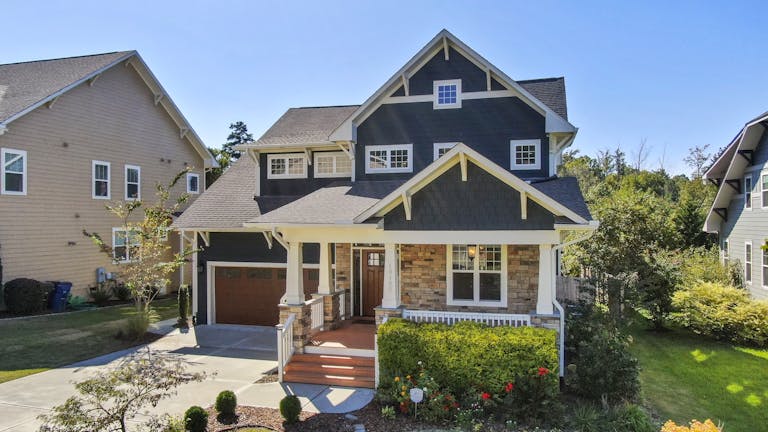Get a Free Virtual Rental Evaluation Plus a Custom Cost Quote
Quick Monthly Income & Expense Analysis
The Complete Guide to Rental Property Financial Metrics: Understanding What Really Drives Investment Success
When analyzing rental property performance, understanding the right financial metrics can mean the difference between building wealth and watching your investment drain your bank account. Whether you’re a seasoned investor or just starting your real estate journey, these six key metrics provide the foundation for making informed decisions about your rental properties.
Monthly Net Cash Flow: Your Bottom Line Reality Check
Monthly Net Cash Flow represents the actual cash left in your pocket each month after all expenses are paid. It’s calculated by subtracting your total monthly expenses from your total monthly income.
Example: With $1,380 in monthly income and $1,395 in expenses, your monthly net cash flow is -$15.
Why Monthly Cash Flow Matters
Monthly cash flow is the most immediate indicator of your property’s financial health. Positive cash flow means your property pays for itself plus puts money in your pocket. Negative cash flow means you’re subsidizing the property from your personal funds.
Key insight: Many investors focus solely on appreciation potential while ignoring cash flow, but consistent negative cash flow can force you to sell during market downturns when you can’t afford to keep funding the property.
Annual Cash Flow: The Yearly Financial Picture
Annual Cash Flow simply multiplies your monthly net cash flow by 12 to show your yearly financial position from the property.
Example: A -$15 monthly cash flow equals -$185 annually, meaning you’ll need to contribute $185 from other sources to keep the property operational.
Strategic Considerations for Annual Cash Flow
While a small negative annual cash flow might seem manageable, consider:
Net Operating Income (NOI): The Metric Professionals Target
Net Operating Income is your total rental income minus all operating expenses, but excluding mortgage payments, depreciation, and taxes. It represents the property’s raw earning power before financing costs.
Example: With $1,380 monthly income and $595 in operating expenses (excluding mortgage), your monthly NOI is $785, or $9,420 annually.
Why NOI Is the Gold Standard
Our company deeply believes in targeting Net Operating Income because it balances rate, vacancy, and cost considerations while focusing on long-term quality. Here’s why NOI is superior to other metrics:
1. Financing-Independent Analysis NOI allows you to evaluate a property’s performance regardless of how it’s financed. This enables accurate comparisons between properties and helps determine optimal capital allocation.
2. Commercial Real Estate Foundation NOI directly underpins commercial real estate valuations through cap rates (NOI ÷ Property Value = Cap Rate). Understanding NOI prepares investors for larger commercial deals.
3. Long-Term Focus Unlike cash flow, which can be manipulated through financing terms, NOI reflects the property’s fundamental earning capacity. A property with strong NOI will perform well regardless of interest rate fluctuations.
4. Vacancy and Quality Balance NOI naturally balances rental rates with occupancy. Higher NOI achieved through premium rates with stable tenancy is superior to lower NOI from discounted rates.
Total Monthly Income: Revenue Optimization
Total Monthly Income includes all revenue streams from the property: base rent, parking fees, pet deposits, laundry income, and other ancillary revenue.
Example: $1,380 in total monthly income might include $1,250 base rent, $50 pet fee, $30 parking, and $50 laundry income.
Income Maximization Strategies
Successful property management involves optimizing all revenue streams:
Total Monthly Expenses: Cost Management Excellence
Total Monthly Expenses encompasses all costs associated with operating the property: mortgage payments, insurance, taxes, maintenance, management fees, utilities, and other operational costs.
Example: $1,395 in total monthly expenses might break down as: $800 mortgage, $200 taxes, $150 insurance, $100 management, $100 maintenance, $45 other costs.
Expense Category Management
Fixed Expenses (60-70% of total):
Variable Expenses (30-40% of total):
Expense Ratio: Operational Efficiency Indicator
Expense Ratio divides total operating expenses by gross rental income, showing what percentage of revenue goes to expenses.
Example: With $1,395 in expenses and $1,380 in income, the expense ratio is 101.1% (indicating expenses exceed income).
Healthy Expense Ratios by Property Type
Note: Lower ratios indicate better operational efficiency, but extremely low ratios might suggest deferred maintenance.
The Counterintuitive Truth About Competitive Pricing
Here’s a professional insight that many property owners don’t intuitively understand: competitive rents attract the best residents, which reduces most other problems in rental management and typically increases all financial metrics over time.
Why Competitive Pricing Works
Quality Tenant Attraction When your property is priced competitively within the market, you attract tenants with more options who choose your property for its value rather than desperation. These tenants typically:
Market Positioning Benefits Competitive pricing positions your property as a desirable option rather than a last resort. This creates:
The Strategic Rent Reduction
A rent reduction often has direct benefits. While this seems counterintuitive, reducing rent by $50-100 per month can:
The Vacancy Cost Reality
Vacancy is like setting cash on fire – it benefits no one. Every day a property sits vacant:
Vacancy Cost Calculation
For a property generating $1,380 monthly rent:
Strategic insight: A $100 monthly rent reduction that prevents 30 days of vacancy saves $775 in the first month alone, while attracting better long-term tenants.
Integration Strategy: Using Metrics Together
The most successful rental property investors don’t optimize for a single metric but understand how they interact:
NOI-Focused Strategy (Recommended)
Cash Flow vs. NOI Trade-offs
Sometimes accepting temporarily lower cash flow (through competitive pricing) maximizes long-term NOI through:
Conclusion: The Long-Term Wealth Building Approach
Successful rental property investment requires understanding how these metrics work together rather than optimizing for any single number. By focusing on Net Operating Income while maintaining competitive market positioning, property owners can build sustainable, long-term wealth through real estate.
The key is recognizing that rental property success comes from providing quality housing at fair market rates to desirable tenants, rather than trying to maximize short-term cash extraction at the expense of long-term property performance.
Remember: the best rental property investment is one that performs well across all metrics while building equity, providing tax benefits, and requiring minimal personal financial contribution to maintain.










